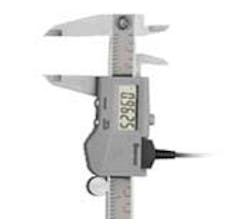Despite Recession, Manufacturers Try to Keep Turnover Down
For many manufacturers, spending the cash required to train workers is unthinkable in the midst of economic uncertainty.
But, for others, the thought of losing their most skilled workers is equally terrifying. The link between training and turnover may not be obvious, but the overall cost of one often has a corresponding effect on the other.
According to respondents to American Machinist’s fourth annual Benchmarks for Machine Shops survey, the median annual labor turnover rate for 2008 was 5 percent. The average among all respondents was 10.9 percent. Among the Benchmark shops, those whose combined performance results and practices rate the highest, that number dropped to a median of 3.7 percent.
What it tells you is that the companies that have lower turnover rates are more flexible in a down economy,” says Rob Akers, Chief Operating Officer for the National Tooling and Machining Association. “That means the business is more diversified, and not heavily engaged within one industry or customer. If you’re diversified, you can withstand the changes and turbulence that comes.”
It also reveals that many of the toprated shops in the country have gone to great lengths to instill workforce stability. The easiest method, according to several manufacturers, is to create an atmosphere workers want to be a part of.
At Newtron, a precision manufacturer located in Auburndale, Mass., that comes through an unusual work structure. Employees are given a set number of jobs over a course of a month and are tasked with prioritizing projects and overseeing their completion.
“Every guy is allowed to work at the level he can function at,” says Jeff Arcuri, Newtron’s vice president of sales. “We don’t pigeon-hole anyone. As people’s skills evolve, they take on more responsibility. Nothing’s worse than somebody working on a job and not knowing what they’re doing next. If you are three or four jobs deep, there’s more drive to get the work done.”
Newtron, which employs 13 workers, is located in a region with several manufacturing competitors. It must therefore draw workers through its reputation.
KVK Precision, a machining and fabrication shop located in Shenandoah, Va., is by comparison located in a more rural setting. Though it has 260,000 square feet of manufacturing space, there are no competitors within 50 miles.
That doesn’t mean KVK Precision isn’t addressing workforce stability.
“One thing that people don’t realize in keeping a quality workforce is the importance of continually reinvesting in tooling and equipment,” says KVK Precision president Jeff Vaughan.
Every two years, Vaughan brings several of his shop workers with him to The International Manufacturing Technology Show to see the latest technology. It serves two purposes: to see what’s on the cutting edge, but also appreciate how much the company has invested in new machinery.
“You always have to challenge your workforce,” says Vaughan. “If they reach a level of boredom, that’s a challenge. So you have to keep your employees up with technology.”
Some suggested that workforce stability comes as a result of employees having a personal stake in the company. To Ashland Technologies, a contract manufacturer of 36 employees located in Hegins, Pa., that means cultivating relationships and establishing excellent communication from the ground, up.
“There isn’t, in my opinion, a better advertisement for a good working atmosphere than the employees themselves,” says Roger Strohecker, manufacturing manager at Ashland Technologies. “And that comes from maintaining communication with all your employees. It doesn’t happen by luck or by accident. It’s something you instill from the get-go.”
Turnover’s linkage with training doesn’t come by accident, says NTMA’s Akers. To understand the value of training, he says, one also has to understand the devastating nature of turnover.
“I look at a shop like ours and we hold tolerances on some applications of 50-millionths,” says Newtron’s Arcuri. “To train a guy to do that right, it doesn’t happen overnight or in months. It takes years.”
Providing training rarely results in immediate gratification, says KVK Precision’s Vaughan. But what it does, he says, is prepare a shop with the flexibility to handle the unexpected.
When companies respond to the economy and attempt to cut costs by reducing headcount, it can unwittingly shoot itself in the foot.
“All these factors have a profound value,” says Vaughan. “It’s hard to put a price tag on that.”
